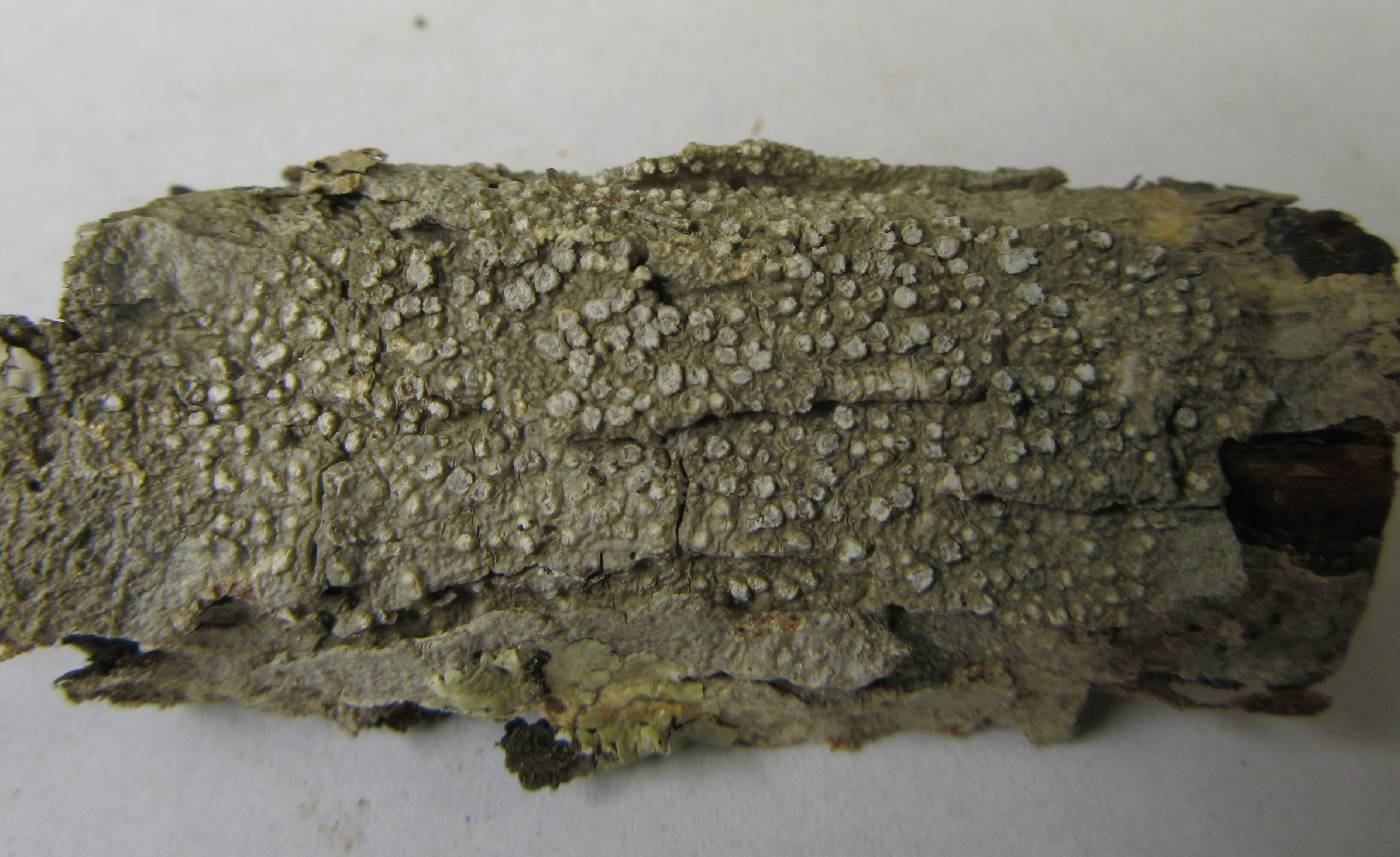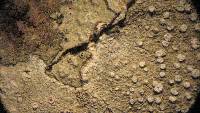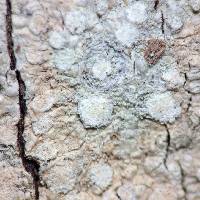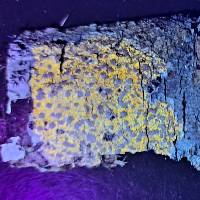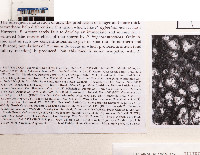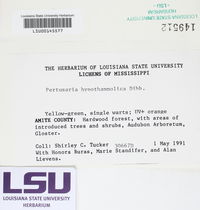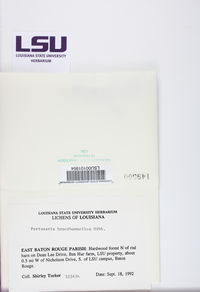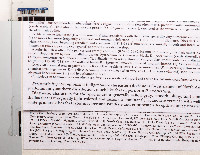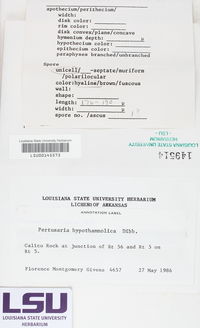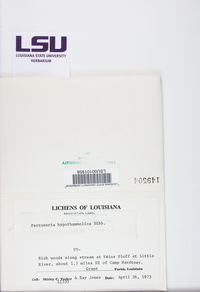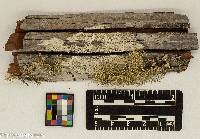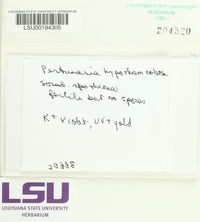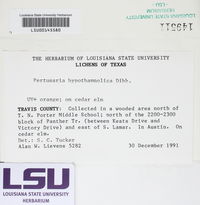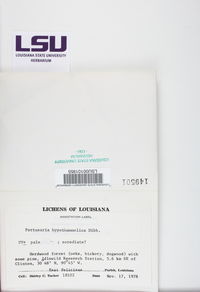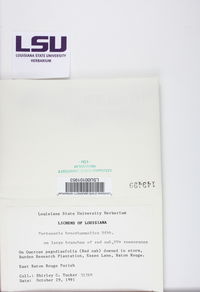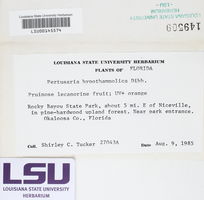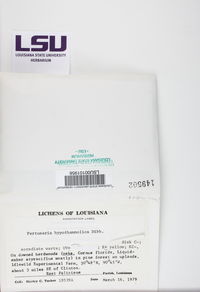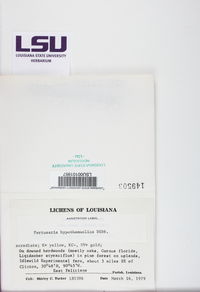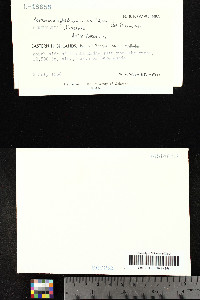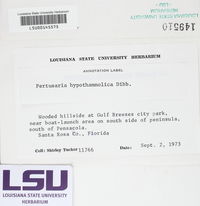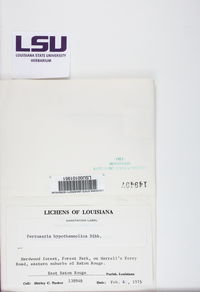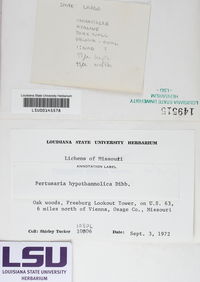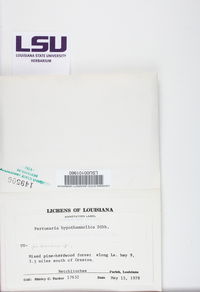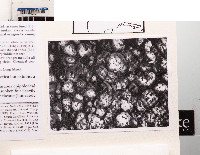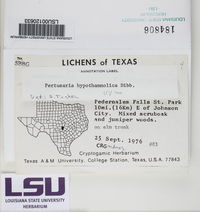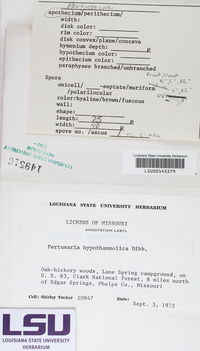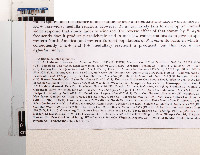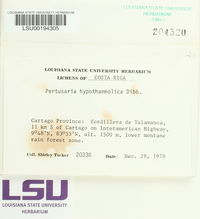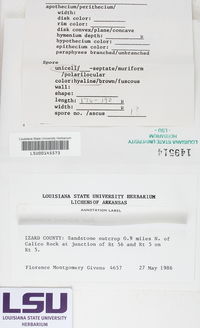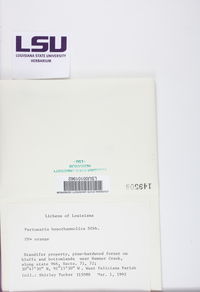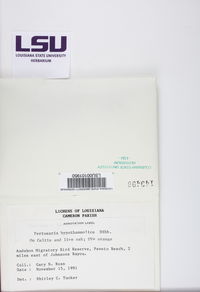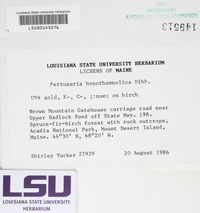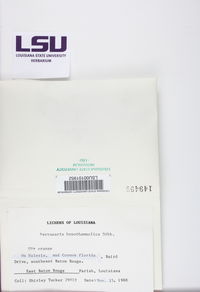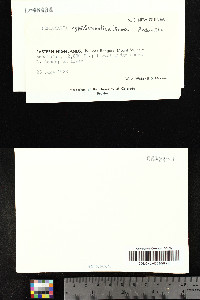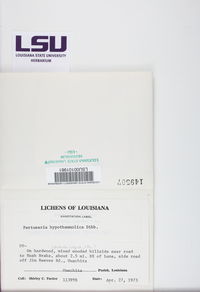
- Home
- Search
- Images
- Species Checklists
- US States: O-Z >
- US National Parks
- Central America
- South America
- US National Parks
- Southern Subpolar Region
|
Lepra hypothamnolica (Dibben) Lendemer & R.C.Harris
 (redirected from: Pertusaria hypothamnolica Dibben) (redirected from: Pertusaria hypothamnolica Dibben) |
|
|
Family: Ochrolechiaceae
[Pertusaria hypothamnolica Dibben] |
MB# 821149 TYPE. UNITED STATES. Illinois, Randolph Co., Rock Castle Creek, 1.5 mi. N of Wine Hill, on oak in dry woods, Skorepa 4244 (DUKE, holotype; DIBB, SIU, SKOR, isotypes). Description. Life form: lichenized fungus. [Modified from Dibben (1980)] Thallus crustose, yellow-grayish, epiphloedal, thin to moderately thick, the margin +/- entire, paler than the thallus. Surface smooth or tuberculate, rarely rugose-plicate, shiny, predominantly continuous to at times finely rimose, rarely areolate. Vegetative diaspores soredia (33-178 um in diameter), restricted to verrucae, well developed only on older ascomata. Photobiont chlorococcoid alga. Fertile verrucae lecanorate, less often sorediate, concolorous with the thallus, numerous and crowded, at times fused (2-3(-4) or more), frequently adpressed and mutually deformed, (0.6-)1.2(-2.0) mm in diameter. Disks dark and sunken, heavily white-pruinose, later becoming sorediate and erumpent, (0.4-)1.0(-1.6) mm wide, the initially smooth and intact verrucal margins becoming fissured (at times appearing two-layered) or eroded as soralia develop. Ascomata pertusaroid apothecia, 1(-3) per verruca, rarely aborted, (0.34-)0.61(-0.94) mm diam. Epithecium dark-brown or black, K-; hymenium hyaline to white or yellow-brown; hypothecium hyaline to pallid or darker. Asci clavate, rarely aborted, (43-)69(-106) x (170-)212(-319) μm, 1(-2)-spored; ascospores simple, hyaline, often with yellow-brown, granular, or oily contents, ends dissimilarly shaped, (34-)53(-98) x (119-)163(-213) μm, wall and lumen K-; spore wall smooth, (1-)3(-6) μm thick. Pycnidia not known. Chemistry. Cortex UV- or + yellow to yellow-orange, KC-, C-, PD-; medulla K- or + yellow slowly becoming violet, KC- or + wine red, C-, PD-; lichexanthone and haemathamnolic acid detected by TLC. Substrate and Habitat. Corticolous on hardwood trees, less often conifers. Distribution. Eastern North America; in North Carolina found throughout. Literature Dibben, M.J. (1980) The Chemosystematics of the Lichen Genus Pertusaria in North America North of Mexico. Publications in Biology and Geology No. 5, Milwaukee Public Museum Press, Milwaukee. 162 pp (original description as Pertusaria hypothamnolica). Lendemer, J.C. & R.C. Harris (2017) Nomenclatural changes for North American members of the Variolaria-group necessitated by the recognition of Lepra (Pertusariales). The Bryologist 120(2): 182-189. |
